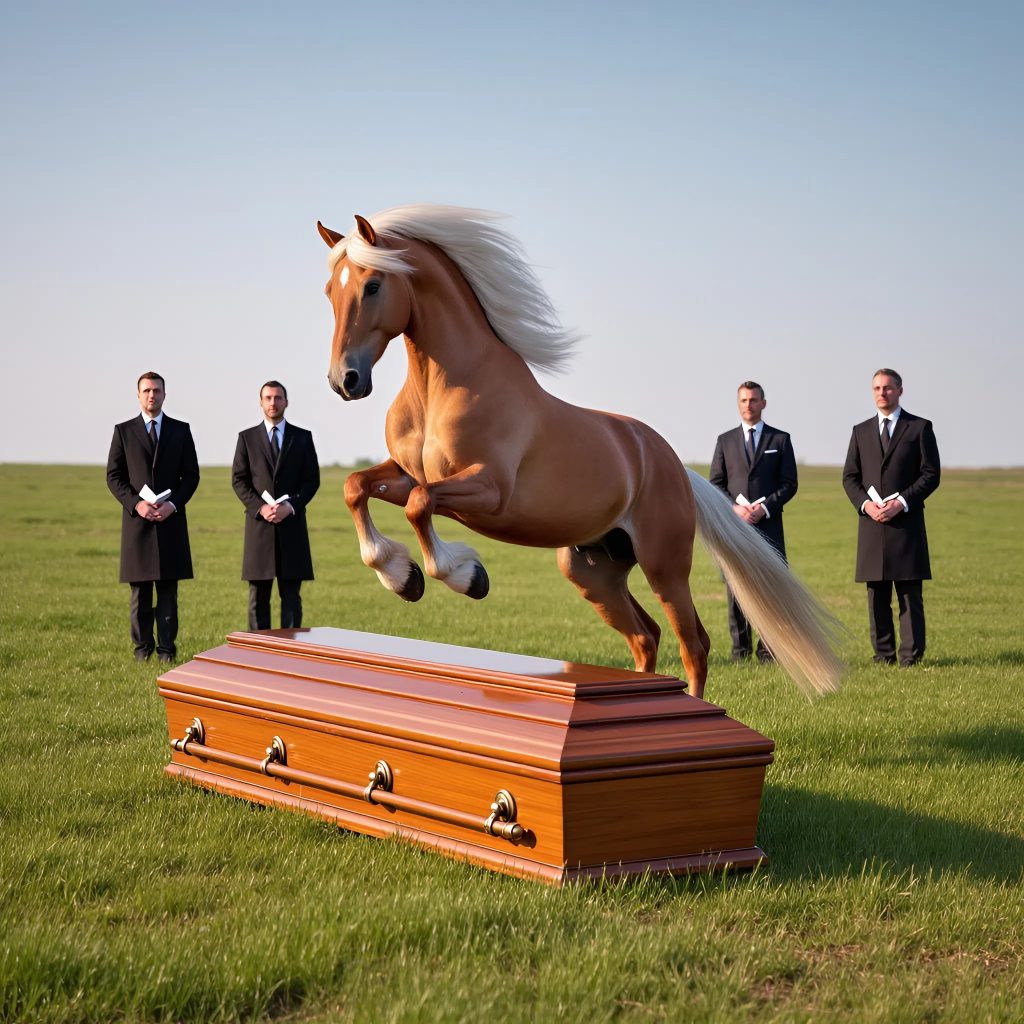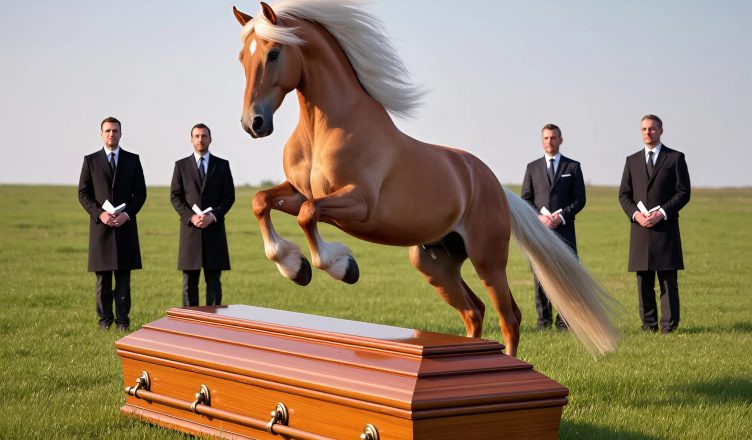On the edge of an old village, silence hung heavy in the air — a suffocating stillness that even the wind seemed afraid to disturb. People stood by a freshly dug grave, their heads bowed. They were saying farewell to a man known and loved by everyone. He had been a friend, a helper, a quiet soul who never passed anyone by. Now, the autumn leaves rustled underfoot, soaking in the sorrow of that final day.
Among the mourners stood old men with red-rimmed eyes, women dressed in black scarves, and children clinging to their mothers. The polished oak coffin gleamed faintly under the pale light, reflecting the last echoes of life. The air was thick with grief — prayers mixed with muffled sobs, and the breeze whispered through the trees as if it, too, was mourning.
Then, suddenly, a distant sound broke the stillness. A rhythmic, pounding echo — like thunder, but alive. Heads turned. The sound grew louder, closer, more urgent. And then, from behind the line of old elms, he appeared — a massive black stallion, his coat shining like coal, his eyes burning with strange awareness. On his forehead was a white mark, shaped like a cross. He galloped straight toward the grave, kicking up clouds of dust.

Gasps erupted from the crowd. Some stepped back, fearing the animal had gone mad. But just before reaching the coffin, the stallion stopped. Dead still. His chest heaved, but he made no sound. He simply stood there, gazing at the coffin as if he understood who rested beneath it.
An old woman whispered, trembling:
— It’s him… It’s Petro’s horse.
Everyone knew the story. The man being buried had once owned this horse. They were inseparable — working the fields together, hauling wood, walking side by side on quiet country roads. The stallion never let anyone else approach him. When Petro died, the horse disappeared — no one saw him again. Until now. Until this moment.
A few men tried to drive him away, but he refused to move. He lowered his head slightly and touched the coffin with his muzzle. That single, gentle motion froze everyone in place. It wasn’t instinct. It was farewell.
Minutes passed. Then the stallion gave a low, trembling snort, lifted his head toward the gray sky, and slowly turned away. He walked past the people without haste, disappearing behind the trees. No one dared speak until he was gone. Only then did the murmurs begin — soft, uncertain, filled with awe.
Some said the horse had felt his master’s death. Others believed it was Petro’s soul, returning in the form of his beloved animal to say goodbye to the life he’d left behind.
That night, people claimed to hear hoofbeats near the cemetery — slow, steady, circling the fresh mound of earth. But when dawn came, the ground was undisturbed. Only a few hoofprints led away into the forest — like silent proof that love and loyalty do not end with life.
From that day, the black stallion became a legend. The villagers still tell his story, quietly, as though afraid to break the spell. Because no one ever figured out how he knew — when, where, or why to come.
And only the old woman, the one who had recognized him first, whispered to her neighbors:
— He’s not just a horse. He’s memory. And memory, when it’s true, always comes to say goodbye.
